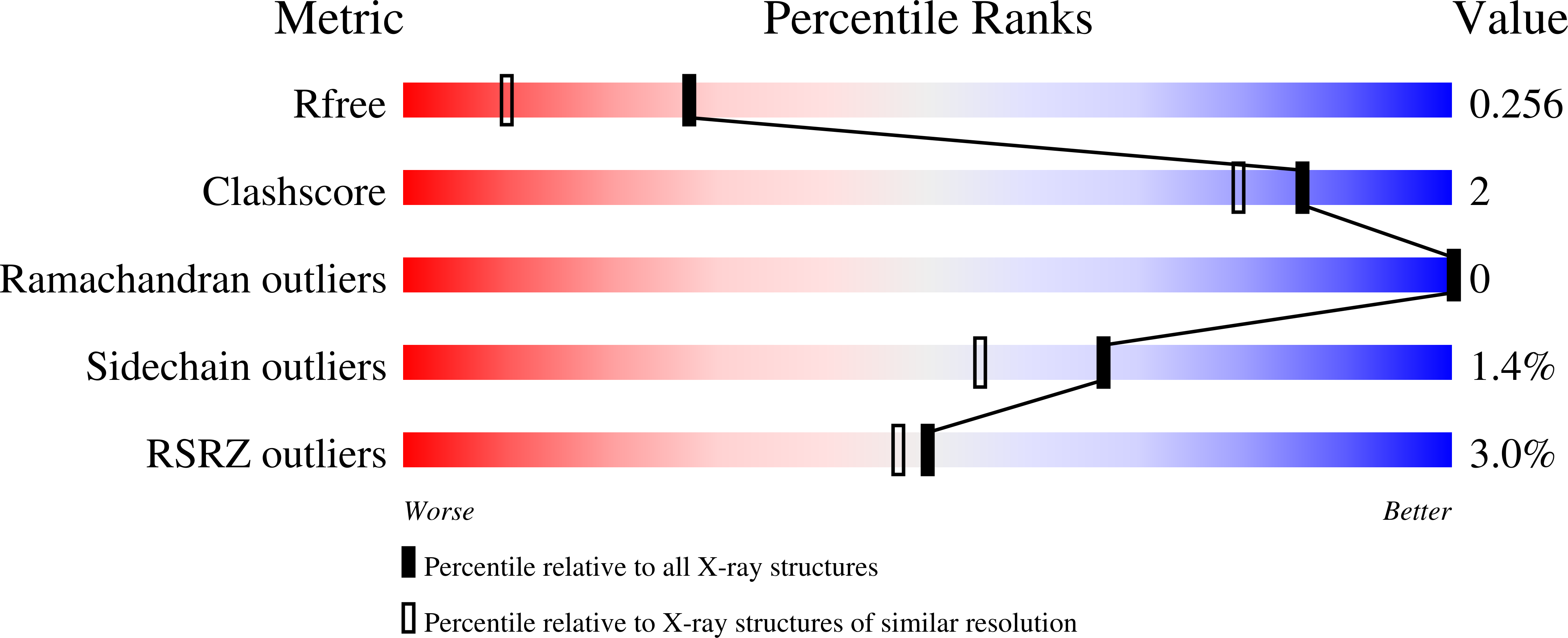Conserved Signal Peptide Recognition Systems Across the Prokaryotic Domains.
Coulthurst, S.J., Dawson, A., Hunter, W.N., Sargent, F.(2012) Biochemistry 51: 1678
- PubMed: 22289056
- DOI: https://doi.org/10.1021/bi201852d
- Primary Citation of Related Structures:
2XOL, 2Y6Y, 2YJM - PubMed Abstract:
The twin-arginine translocation (Tat) pathway is a protein targeting system found in bacteria, archaea, and chloroplasts. Proteins are directed to the Tat translocase by N-terminal signal peptides containing SRRxFLK "twin-arginine" amino acid motifs. The key feature of the Tat system is its ability to transport fully folded proteins across ionically sealed membranes. For this reason the Tat pathway has evolved for the assembly of extracytoplasmic redox enzymes that must bind cofactors, and so fold, prior to export. It is important that only cofactor-loaded, folded precursors are presented for export, and cellular processes have been unearthed that regulate signal peptide activity. One mechanism, termed "Tat proofreading", involves specific signal peptide binding proteins or chaperones. The archetypal Tat proofreading chaperones belong to the TorD family, which are dedicated to the assembly of molybdenum-dependent redox enzymes in bacteria. Here, a gene cluster was identified in the archaeon Archaeoglobus fulgidus that is predicted to encode a putative molybdenum-dependent tetrathionate reductase. The gene cluster also encodes a TorD family chaperone (AF0160 or TtrD) and in this work TtrD is shown to bind specifically to the Tat signal peptide of the TtrA subunit of the tetrathionate reductase. In addition, the 3D crystal structure of TtrD is presented at 1.35 Å resolution and a nine-residue binding epitope for TtrD is identified within the TtrA signal peptide close to the twin-arginine targeting motif. This work suggests that archaea may employ a chaperone-dependent Tat proofreading system that is similar to that utilized by bacteria.
Organizational Affiliation:
College of Life Sciences, University of Dundee, Dundee DD1 5EH, Scotland, United Kingdom.

















